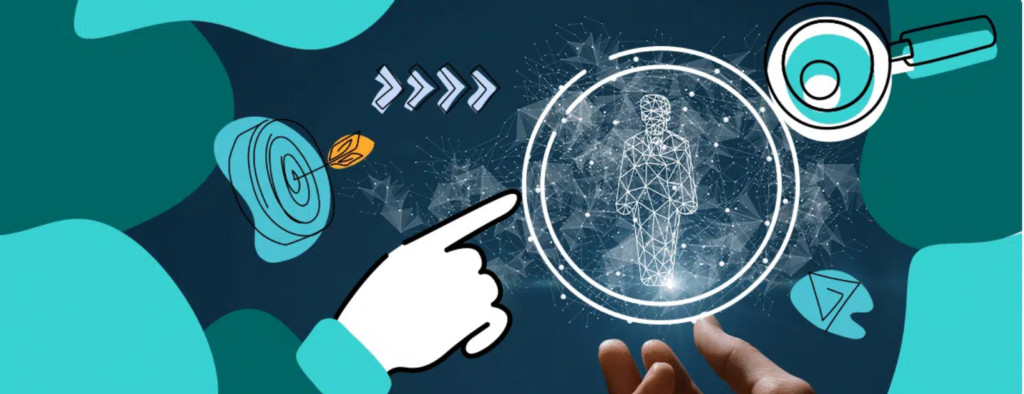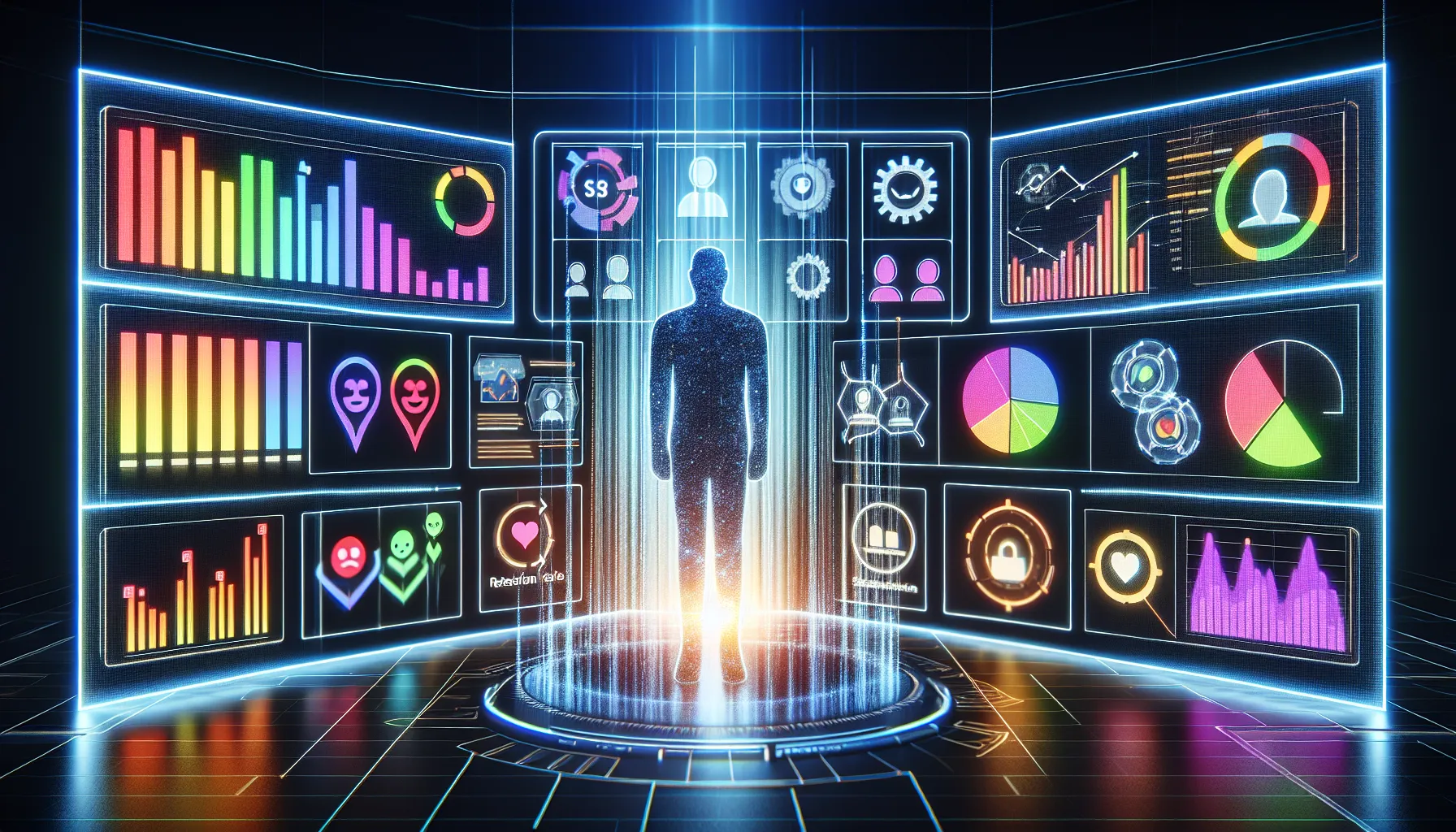
In an age where data is abundant but human insight is scarce, building accurate customer understanding is more challenging than ever. At DigiSwarm, we’ve embraced customer personas using AI to streamline this process, taking raw interactions and transforming them into living, breathing audience profiles. These AI-augmented personas help brands not only understand demographics but also anticipate preferences, pain points, and purchase triggers.
By leveraging machine learning and natural language processing, we can now analyze thousands of customer touchpoints—social media posts, reviews, survey responses, and click behavior—to highlight trends and reveal customer clusters. Customer personas using AI therefore bridge the gap between data science and marketing empathy, allowing businesses to connect on a deeper level with their audience.
This approach doesn’t just replace traditional persona templates; it amplifies them. It uncovers emotional drivers, behavioral patterns, and latent needs we may never have detected through instinct or manual research alone.
What Makes AI Personas Different
Traditional persona creation often relies on interviews, surveys, or sales observations. Yet human bias and limited sample sizes can leave blind spots. With customer personas using AI, these gaps shrink dramatically. AI aggregates real-world interactions at scale and identifies patterns often invisible to human analysts. For example, it can detect correlations between browsing habits—like reading late-night blog posts—and persona traits such as “night owl learners.”
Additionally, AI-driven personas continue to evolve. As new data flows in—from CRM systems, content engagement logs, or chatbot transcripts—the persona refines itself. This dynamic nature ensures that personas stay relevant in changing markets, seasons, or even cultural contexts. Instead of revisiting a static document every quarter, brands can now work with living, breathing personas that respond in near real-time to customer behavior shifts. This adaptive capability gives businesses a competitive edge, particularly in fast-paced or trend-sensitive industries.
For example, if a sudden economic downturn changes buyer sentiment, AI can quickly reflect that in persona behavior, such as increased price sensitivity, reduced engagement with luxury products, or higher demand for educational content. Marketers can then pivot strategies immediately, rather than months later after manual reanalysis.
Moreover, AI enhances granularity. It allows for the creation of micro-personas within larger clusters, uncovering hidden niches that traditional methods would ignore. A fitness app, for instance, may discover that users who sign up after midnight and open push notifications early in the morning are more responsive to accountability-based content rather than performance tracking.
These deep insights empower better personalization. Instead of generic segmentation, businesses can create journey maps tailored to each micro-persona’s motivations, fears, and goals, leading to more resonant messaging and higher conversions. As a result, customer personas using AI don’t just inform marketing—they transform it from a guessing game into a data-guided strategy.
Building Personas Step by Step
First, gather broad datasets: website analytics, transaction histories, survey responses, chatbot logs, and social listening data. Then feed these into an AI tool capable of clustering, such as IBM Watson, Google Cloud AI, or Shield AI. These algorithms group users based on shared attributes—age range, mobile behavior, content preferences, buying triggers customer personas using AI.
Next, enhance each cluster with qualitative labels—like “value-driven millennial,” “early adopter technophile,” or “price-conscious homemaker.” Supplement this with emotional sentiment analysis by processing social media or review text, so that painless emotional drivers become visible.
Finally, test these personas by applying them in content personalization, email segmentation, or product recommendations. Validate results through ROI, engagement, or conversion tests.
How AI Enhances Persona Accuracy
AI enhances persona creation in four major ways:
-
Scale: AI can process millions of interactions and touchpoints—no manual survey can match the customer personas using AI.
-
Precision: Small yet powerful attribute correlations—like time of day, device, or sentiment—emerge only when using advanced modeling.
-
Adaptivity: As your audience evolves, so do the personas—seasonally, culturally, or across trends.
-
Prediction: AI can forecast emergent behaviors—identifying lead nurture tracks or new audience niches before human teams would.
Applied thoughtfully, customer personas using AI act as a strategic compass, ensuring your campaigns speak to real people with tailored emotions and needs.

Implementing AI Personas in Marketing Workflows
First, embed personas into content creation. If persona clusters prioritize convenience over cost, your messaging should highlight simplicity, speed, and support—qualities that appeal to that group. Meanwhile, high-value luxury personas may resonate more with elegance, craftsmanship, and status.
Email segmentation is another fertile ground. Personas help shape onboarding sequences, cross-sell recommendations, and even cart abandonment triggers. AI can trigger different email flows based on the persona cluster the user fits into, and customer personas using AI.
In paid ads—like Google or Meta campaigns—you can feed persona criteria into audience targeting as interest categories. These nuanced segments often outperform generic demographics because they’re based on behavior and intent, not just age or gender, and customer personas using AI.
Measuring Success & Adapting
Track key metrics for each persona—open rates, conversion rates, session duration, and LTV. If a persona shows low engagement, revisit its definition: refine data collection, add new sentiment profiles, or see if AI reassigns audience clusters.
Integrating AI personas into analytics tools like Google Analytics or Adobe Analytics gives you actionable dashboards. This helps highlight which personas are growing, which need cultivation, and which may no longer be relevant. By consistently measuring these metrics, marketers can align campaigns more accurately with evolving audience expectations.
A strong analytics framework for customer personas using AI also supports A/B testing based on AI-generated personas. For example, email subject lines or landing page designs can be tested separately for different persona groups, allowing businesses to fine-tune messaging at a granular level. This continuous feedback loop makes AI persona modeling not just a strategic foundation but an executional advantage as well.
For teams looking to get started, resources like Google’s guide to Google Analytics 4 offer useful walkthroughs for setting up detailed customer personas using AI audience segments, custom dimensions, and event tracking that can be mapped directly to AI persona clusters. These tools help correlate persona behavior with business KPIs across platforms and devices.
Moreover, integrating personas with your CRM system allows for even deeper insights. Marketers can identify if specific personas have shorter sales cycles, require more nurturing content, or engage better on certain channels like WhatsApp or LinkedIn. This data can inform not only content strategy but also customer support and product development, customer personas using AI.
Over time, these metrics offer predictive intelligence. AI systems can begin to anticipate when a persona is likely to churn or convert, allowing marketers to trigger timely automations—discounts, surveys, retargeting, or onboarding sequences—that are aligned with the persona’s life cycle stage. This proactive approach minimizes loss, boosts retention, and maximizes ROI.
By keeping persona performance under constant review and feeding insights back into your AI system, businesses build a self-improving model of audience engagement. The result? A marketing engine that gets smarter and more profitable with each campaign.
External Tools & Resources
You can begin experimenting using tools like the IBM Watson Personality Insights API to extract personality dimensions from text data. Integrating customer personas using AI with clustering libraries like scikit-learn can help you begin prototype persona development without a massive investment.
Conclusion: Persona Evolution Powered by AI
In today’s data-rich era, traditional buyer personas fall short. Customer personas using AI close the loop—bringing scale, precision, and emotional intelligence to your targeting strategy. They enable hyper-personalized communications, future-ready segmentation, and emotionally resonant brand experiences for customer personas using AI.
At DigiSwarm, we specialize in integrating AI-crafted personas into full-funnel marketing strategies—from content to ads to email—to drive engagement and growth. For businesses looking to leverage AI-driven audience insight with the best digital marketing agency in Dehradun, DigiSwarm offers strategic implementation, ongoing optimization, and measurable results.

